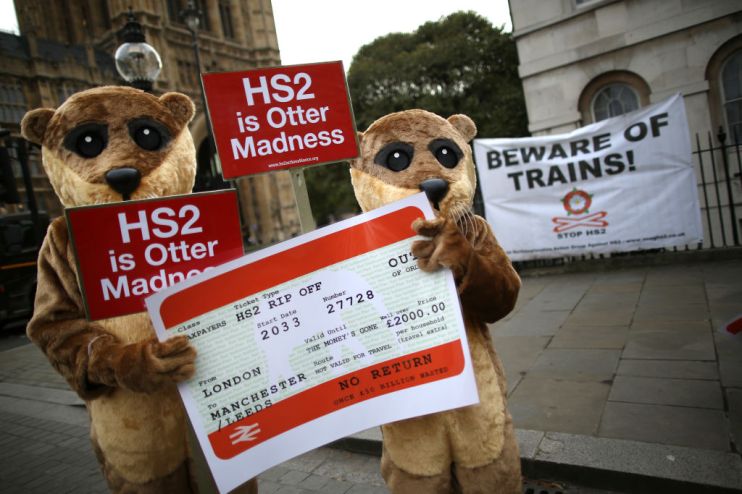Forget glitzy vanity projects like HS2, here’s what we could do instead

Until recently, Crossrail was cited as an example of that miraculous phenomenon: a government infrastructure project running on time and on budget.
We now know that Crossrail has run off track; it is £3bn over its 2010 budget, and will open more than two years late.
The much maligned HS2 project came with none of Crossrail’s optimism. It hasn’t even been fully signed off yet, but we know that there are grave concerns that the costs are already spiralling out of control – so much so that last week the government announced a welcome (if belated) review into the project.
This effort to shine a light on the true costs of HS2 speaks to a familiar story in which public sector capital projects run wildly over budget and are delivered late. On Monday, the TaxPayers’ Alliance (TPA) took a look at 10 infrastructure projects – including Crossrail – and found the total cost overrun to be £17bn, with total delays of nearly 33 years.
We’re not just talking about transport projects, either. We all remember public sector bogeymen like the NHS Supercomputer, which had cost taxpayers £10bn before the plug was finally pulled.
A cursory glance through the reports archive of the National Audit Office and the Public Accounts Committee reveal reams of documents consistently critical of public sector project management.
Given the colossal waste of taxpayers’ money, it might be easy to argue to cut back on capital spending until we can get it right. As with HS2, the argument is often to simply scrap the project and save the cash.
But unless that saving is used for a big tax cut (which is hardly ever is), that’s not the answer, especially at a time when we need better, more innovative infrastructure more than ever, to take the opportunities presented by Brexit while warding off the challenges.
Instead, the solution is to curb politicians’ unwelcome desire to go for big, shiny projects over smaller ones that deliver better value for money.
Earlier this year, the TPA ran our Great British Transport Competition, which aimed to uncover such initiatives that might give taxpayers more bang for their buck.
The final report looked at 28 such projects, which cumulatively came in at £45.1bn – far less than the current estimates for HS2 alone.
For example, the Skipton to Colne railway line could be brought back to life to boost local employment opportunities, economic growth, and urban regeneration. By improving local rail links, new commuter towns could be built to ease the housing crisis and reduce car journey times. Both the Midland and Chiltern main lines could be electrified for £6bn, resulting in shorter journeys and better air quality.
And as well as the railways, we can’t forget road infrastructure. The Lower Thames Crossing will relieve congestion on the M25 and ageing Dartford Crossings. For £1.3bn, Britain’s longest road, the A1, could be upgraded to dual carriageway from Durham to Edinburgh. In one fell swoop, congestion would be eased and safety greatly improved.
We can also, of course, do far more to encourage the private sector to get involved with infrastructure projects too. Extracting shale gas springs to mind, where stringent regulations have threatened to scupper the entire venture. Research into areas like autonomous vehicles could also be helped along by relaxing regulation, and we could finally get on with expanding Heathrow.
Britain needs to update much of its creaking infrastructure, and that means spending money. It will make us competitive and help address flagging productivity across the country.
But if the public sector is going to spend our funds, it must drastically improve on project management so that taxpayers get value for their money.
So fewer glitzy vanity projects like HS2, please, and more focus on initiatives that might actually work, run by people who know what they’re doing.
Main image credit: Getty